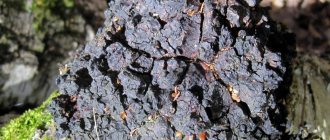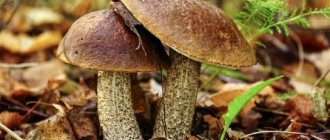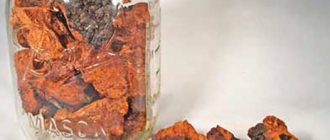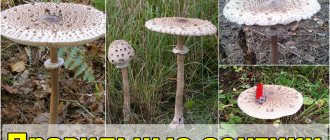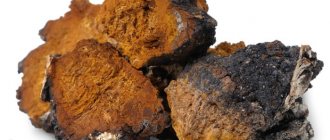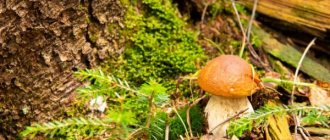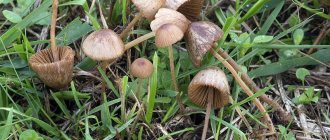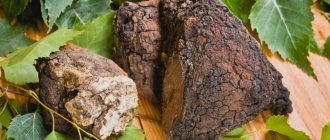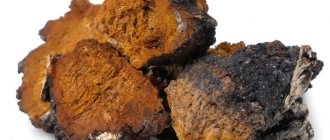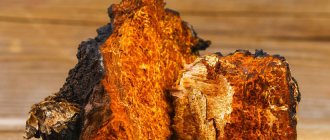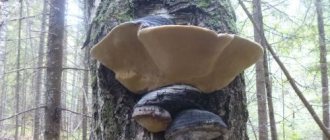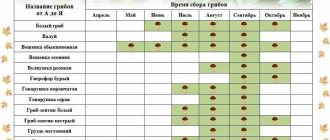- December 13, 2019
- Miscellaneous
- Ekaterina Dushina
Pharmacy medicine is not always healthier than natural medicine. Nature has endowed many plants and mushrooms with beneficial properties. One of these most valuable natural sources of health and youth is the chaga mushroom. Since ancient times, it has been used by healers and healers to heal people. And in our time, the benefits of this mushroom have already been scientifically proven.
kingdom of mushrooms
There are a huge number of types of mushrooms in nature. Scientists classify them as a separate kingdom. People have been using this gift of nature in their daily lives since ancient times. Some mushrooms are eaten by humans, some have healing properties and are used in medicine, while others should be avoided because they are poisonous. All mushrooms can be divided into edible, conditionally edible, inedible and used in medicine. They can grow in the most unexpected places.
There are also those that parasitize on plants or trees. These species include the chaga fungus. He's very helpful. On what trees does the chaga mushroom grow, how and when to collect it? This will be discussed further.
How much does a kilogram of chaga cost in Belarus?
Price for 1 kg - 8 rubles. Bought in its natural form, cut from a tree. Freeze-dried chaga extract is an aqueous extract of the chaga mushroom, the production of which uses freeze-drying (freezing).
Interesting materials:
How to request sick leave through Sbis? How to request electronic sick leave? How to request a certificate 2 personal income tax from the FSS? How to run a cow before calving? How to start safe mode at boot? How to launch the on-screen keyboard using the command line? How to launch the on-screen keyboard? How to launch GeForce Experience in a game? How to run the game in windowed mode without entering the game? How to run MSI Afterburner in game?
Where does chaga mushroom grow?
Birch black fungus, or birch chaga, is called so because most often it parasitizes birch trees and has the appearance of a black growth of irregular shape. What trees does chaga grow on in Russia? Despite the obvious reference in the name, it can be found on alder, rowan, elm or maple. It develops as long as the tree is alive. The mushroom grows by feeding on tree sap. Once the tree dies, the parasite dies along with it. But most often the chaga mushroom grows on birch trees.
How does this miracle of nature appear on a tree trunk? Fungal spores appear at the site of damage to the bark. Chaga grows slowly. It takes him 10 years to reach average size. If a tree becomes infected with this parasite, it dies after some time. The life cycle of the fungus is 10-20 years.
How to distinguish suitable mushrooms
Before you go to get chaga birch mushroom, you need to know how to collect and how to recognize the suitability of the growth. When choosing a fruit for cutting, you need to consider a number of factors:
- Chaga may look like tinder fungus, a tree fungus that does not have medicinal properties. The easiest way to distinguish growths is their softness. Chaga grows more tightly to the tree; adult specimens cannot be cut down without an ax or saw. The tinder fungus clings to the tree trunk only with its leg and is easy to cut off with a knife;
- Chaga has a dark gray or black color and a lumpy irregular shape. The structure of the mushroom is such that it is impossible to distinguish the stem from the cap. The tinder fungus is gray in color, with an oval, even cap, under which you can really see the semblance of a leg, and has a clearly defined hoof shape;
- Chaga does not grow on dead trees and stumps, where the poisonous tinder fungus likes to settle;
- the pulp of a real birch mushroom has a rich red tint;
- Fungal growths located in the lower part of the tree are considered the least suitable for use for medicinal purposes. The higher chaga grows, the more beneficial it is. The greatest concentration of valuable substances is contained in a mushroom that grows at a height of five meters above the ground;
- Also, growths cut on dead wood will have the least effectiveness. It is recommended to harvest from live or freshly cut trees;
- When harvesting, it is necessary to pay attention to the good condition of the mother trees. Sick and parasite-affected plants cannot feed the fungus with the necessary microelements. Also an important factor is how old the tree is - the older the specimen, the more powerful the mushrooms can grow on it;
- Forests near highways, near hazardous enterprises, or if there is an industrial area or road nearby are not suitable for collecting growths. Chaga has the ability to accumulate heavy metals and harmful components in a short time. Such a product will not bring any benefit, but, on the contrary, can worsen the health condition.
The difference between chaga and other tinder fungi
Chaga belongs to the tinder fungi and is also called the beveled tinder fungus. There are many varieties of tinder fungus, and they always parasitize different trees. Among them, chaga is recognized by certain characteristics, one of which is layers.
Chaga consists of three layers:
- Outer. It has a black resinous or black-brown color and an uneven surface with cracks.
- Average. Dense, brown-brown in color.
- Interior. It has a brownish-reddish color with white-yellow streaks.
You already know what trees chaga grows on. She prefers birch, but can grow on alder, rowan, and maple.
Indications and restrictions for use
Healing wood sponge is recommended for use in various diseases. The list of indications for internal use is quite long and includes diseases of many body systems. These include:
- oncology;
- diseases of the heart and blood vessels;
- leukopenia;
- viral diseases;
- inflammatory processes;
- diabetes mellitus and other disorders of the endocrine system;
- damage to the mucous membrane of the duodenum;
- gastritis;
- previous surgery;
- insomnia, depression and other nervous disorders;
- obesity;
- spasms;
- tachycardia and hypertension.
Birch chaga mushroom
In addition, the mushroom is used to generally strengthen the body and increase immunity, to stimulate brain activity. Chaga is also used externally to treat diseases such as:
- dermatosis;
- rash;
- cold sore lips;
- keratinization of the integumentary epithelium;
- ulcers;
- burns;
- frostbite;
- abrasions, abrasions and wounds;
- acne;
- peeling of the skin;
- insect bites.
Use of the mushroom for the treatment of diseases
In dentistry, it is used as an anti-inflammatory and analgesic for:
- deep damage to periodontal tissue;
- inflammatory disease of periodontal tissues;
- damage to the oral mucosa;
- toothache.
However, it is not always possible to use tinder fungus for medicinal purposes. Contraindications to the use of the mushroom are:
- taking penicillin drugs;
- intravenous administration of glucose solution;
- insufficient bowel movements;
- inflammatory disease of the colon mucosa;
- shigellosis;
- pregnancy;
- lactation period;
- individual intolerance.
Advice!
During the treatment period, it is recommended to replace meat with vegetable and dairy sources of protein. You should not eat canned and smoked foods, spicy foods. In addition, you should give up bad habits such as smoking and alcohol abuse.
Beneficial features
Only the mushroom that grows on living trees and only on birch trees has beneficial properties. If you see a parasite on a dead tree, know that it no longer contains any beneficial properties. Chaga has a complex chemical composition. It contains polysaccharides, organic acids, lipids, fiber, steroid pterin compounds, trace elements - copper, zinc, iron, barium, aluminum, calcium, potassium, magnesium, sodium, manganese. Chaga also contains a chromogenic polyphenolcarbon complex. Due to such an unusual composition, this gift of nature has a positive effect on metabolism, nervous system, and immunity.
The healing properties of chaga help fight malignant tumors. Of course, by consuming this mushroom, you can only improve the patient’s condition, but this mushroom cannot completely get rid of malignant tumors. It also helps in the treatment of diseases of the gastrointestinal tract - gastritis and stomach ulcers.
Chemical composition
According to research by scientists, the chemical composition of this fungus is noticeably different from the similar composition of other tinder fungi. It contains 2-3 times more ash elements. The amount of ash ranged from 12 to 15%, depending on the location of the fruiting body. The composition of ash elements was dominated by:
- Potassium oxide – 50%.
- Sodium oxide – 9-13%
- Manganese oxide – 1.2%
In dry chaga concentrate, the amount of ash elements increased to 23-30% of the dry mass. Also found in this mushroom:
- Carbon -39%
- Potassium – up to 10%
- Hydrogen – 3.6%
- Nitrogen – 0.4%
- Magnesium – 0.64%
- Calcium – 0.37%
- Chlorine – 0.33%
- Phosphorus – 0.23%
- Sodium – 0.05%
- Rubidium – 0.4%
- Sulfur – 0.02%
- Manganese – 0.02%
As well as copper, iron, zinc, vanadium, chromium, traces of selenium, iodine, barium, nickel, bromine and strontium. 15 amino acids were found in the hydrolysis products, among which glycine, aspartic and glutamic acids predominated (up to 40% of all acids), as well as tyrosine, serine, threonine, leucine, methionine, lysine, histidine. Chaga also contains flavonoids, including flavones, flavonones, anthocyanins, catechins, triteric and sterol compounds (6–8%), acid-resistant lignin (25–30%), fiber (2%), hemicellulose (12.5%), derivatives of pteroyl-glutamic acid, organic acids (acetic, butyric, oxalic). This mushroom is also rich in water-extractive substances (up to 40% by dry weight).
Analysis of the physico-chemical properties of high-molecular polyphenolic chaga pigments made it possible to classify them as a class of natural polymer pigments - melanins, which are present in abundance in plant and animal organisms.
Chaga mushroom - a healing birch killer
How and when to prepare
In order for the mushroom to be beneficial, it must be prepared correctly. It is best to collect it in autumn or spring in places where chaga grows. At this time it contains the greatest amount of useful substances. The tree must be alive. What trees chaga grows on was described above. But only the mushroom that grows on a birch tree is useful. It is not recommended to collect chaga close to the ground. The higher the growth is located, the more useful substances it contains.
When going on a quiet hunt, you must take a sharp tool with you, because the parasite grows very tightly into the tree. The growth is cut parallel to the tree trunk. The mushroom must be separated from the remaining wood and loose parts. Only the hard part of chaga is useful.
The prey needs to be chopped into small pieces 3-5 cm in size and dried. You can do it in a ventilated room, or you can do it in the oven at a temperature no higher than 40 degrees, so that the beneficial properties do not disappear.
Chaga should be stored in a glass jar, tightly closed, or in paper bags or in a fabric bag.
Collection technology
Collecting chaga is quite difficult, as it clings tenaciously to the tree.
- You can't pick up a mushroom with your bare hands. To separate it, you will need a knife with a strong blade, or better yet, a small hatchet.
- Chaga should be cut parallel to the trunk, being careful not to damage the tree. Moreover, the upper part has medicinal value, and the junction contains virtually no valuable components.
- Don't waste effort separating the mushroom from the dead tree. On a dead birch tree, the mushroom is also dead, which means it is completely useless for health.
- Don’t forget to sprinkle the cut area of the mushroom with fresh soil so that the wound on the tree heals faster.
Medicinal infusion of chaga
Chaga acts as a biostimulant that improves metabolic processes. An infusion based on it calms the nervous system and increases performance. It can delay the development of a tumor, improve the well-being of patients, but does not completely cure cancer. The drug “Befungin” is made from chaga. Before you begin treatment with mushroom infusion, you should consult your doctor.
The medicinal infusion is very easy to make. Take the dried pieces and soak them in water for 4-5 hours. After this they become soft and easily crushed. Next you need to grate them or pass them through a meat grinder. The crushed raw material is poured with the same water in which it was soaked (1:5), heated to 50 °C (not higher) and left for 48 hours. It is best to infuse chaga in a thermos. Then strain and squeeze. Store the resulting extract for 3-4 days. Before use, dilute with water twice. It is recommended to consume 3 glasses per day 30 minutes before meals.
Medical use
This mushroom contains many useful substances and trace elements. Chaga is a whole storehouse of biologically active substances that can participate in the processes of metabolic regulation, correction and prevention of various pathological disorders. The polymer pigment melanin contained in chaga in the body is involved in DNA repair, the processes of functioning of the respiratory chain, as an electron acceptor, models cellular metabolism, the photo and radioprotective system of the body. The presence of stable free radicals and pronounced semiconductor properties, as well as the ability to easily oxidize and reduce, protects the body from extreme conditions.
In folk medicine
Chaga mushroom is a healing birch killer.
Chaga has been used in folk medicine since ancient times and has the status of a miracle drug. It was used as:
- Pain reliever.
- Antiseptic drug.
- General strengthening agent.
- A drug for the prevention of the formation of malignant tumors.
- As a diuretic.
- Means for stabilizing blood pressure.
- Drug for the treatment of stomach ulcers
Russian peasants used a decoction of this mushroom for medicinal bathing and washing. The Siberian Khanty burned chaga until it was red, then put it in hot water, stirred until the water turned black, and used this water for washing. In Eastern Siberia and the Far East, they used a medicinal drink made not only from the mature fruiting body of chaga, but also from the embryos of the fruiting body, scraped off in the cracks of the bark and having, when prepared, a pronounced taste of birch sap (this was called “shulga”). They even used fungus-damaged and sap-soaked wood deep in tree hollows.
Chaga mushroom - a healing birch killer
In modern folk medicine, decoctions of this mushroom are used for:
- Treatment and prevention of cancer - home remedies based on this mushroom are best for cancer of the skin, lungs and digestive organs, but are less effective for malignant tumors of the brain and bone tissue.
- Treatment of diseases of the reproductive system - decoctions are used to treat cervical erosion, fibroids, ovarian cysts in women, and prostate adenoma in men.
- Treatment of gastroenterological pathologies - polyps, gastritis, ulcers and other stomach diseases.
- Blood pressure lowering agent.
- Treatment of diabetes mellitus - the decoction has a hypoglycemic effect and helps reduce blood glucose levels.
In official medicine
Chaga has long been used in official medicine. In the glorious Soviet times, you could take chaga found in the forest to the nearest pharmacy and earn yourself a few coppers for ice cream.
The USSR Ministry of Health officially authorized the use of chaga tincture for chronic gastritis, dyskinesias of the gastrointestinal tract with symptoms of atony, for gastric ulcers, and as a symptomatic remedy that improves the general condition of cancer patients.
Chaga decoction has a general tonic and analgesic effect. Preparations from this mushroom are especially effective in combination with traditional methods of treatment.
For example, the inclusion of this decoction in the treatment regimen for peptic ulcer disease reduced the length of stay of patients in a medical institution from 42 to 35 - 30 days. The duration of remissions with the use of chaga preparations was one and a half to two times longer than with treatment with other methods.
There are examples of treatment of advanced forms of psoriasis in patients simultaneously suffering from diseases of the gastrointestinal tract. Most patients were completely cured after 2–3 months of treatment with chaga-based drugs; the rest experienced significant improvement in their condition.
People with advanced stages 3 and 4 cancer, regardless of tumor location, also improved with long-term use of these drugs. In the majority of patients who did not have extreme exhaustion of the body, after 3-4 weeks of using chaga drugs, the pain decreased markedly, and then the pain stopped, which made it possible to avoid the usual practice of pain relief with narcotic drugs.
Various dietary supplements based on chaga may well be a significant addition to traditional medicines, or even an alternative to them. They can be included in treatment regimens for patients to quickly restore the body’s defenses and improve the health of the body, both before and during treatment for various serious diseases, as well as for preventive purposes. The pharmacological action of the elements contained in chaga is carried out, presumably, through the central and peripheral nervous systems, due to the total complex of biologically active substances that model cellular metabolism, causing correction of the processes of bioregulation of the body's defense systems and reserves, and, first of all, due to the already mentioned , a chromogenic humic-like complex of melanin.
Research into the numerous possibilities for the medical use of this mushroom is still being actively carried out, and will certainly bring many more interesting discoveries.
Today in pharmacies you can find:
- Dry raw materials for self-brewing, having a wide range of applications.
- Befungin solution (chaga extract with the addition of cobalt salts) – beneficial for stomach disorders and diseases of the cardiovascular system.
- External balm - for healing cuts, abrasions and burns.
- A variety of dietary supplements based on this mushroom, containing beneficial vitamins, polyphenols and minerals.
Chaga mushroom - a healing birch killer
Contraindications
This mushroom is practically harmless. However, pregnant and lactating women, children under 12 years of age, as well as those who suffer from chronic colitis or dysentery should refrain from consuming chaga decoction.
During treatment with infusion, taking antibiotics and eating sweets are contraindicated. Scientists have found that glucose and penicillin are antagonists of chaga.
Poisonous and inedible species of birch chaga
The false tinder fungus has many external similarities with the beveled tinder fungus. If you are more careful, you can find a couple of differences:
- The false tinder fungus is more ideal in shape, while chaga has the shape of a careless oval or circle.
- The false mushroom grows on dry wood, while chaga dies along with the tree, so you only need to look for it on a living plant. The stump is also the habitat of the false plant.
- The common tinder fungus is easier to remove from the tree, but chaga can only be collected with a knife.
The false polypore is not considered poisonous, but if the ultimate goal is to make a medicinal product, then you need to know the main differences.
Artificial cultivation
Theoretically, the mushroom can be grown at home. To do this, you need to know what trees chaga grows on. It is best to choose a mature birch tree, make a cut in the bark at a height of up to 2 meters from the ground and infect the trunk with parasite spores. You'll have to be patient and persevering. Chaga grows for a very long time. You will have to wait at least 4 years for the first growth to appear.
The second problem is that you need to find the spores somewhere. And they appear when the tree begins to die. Chaga needs to live on a tree for about 15 years for a spore-bearing fruiting body of the fungus to form. It develops under the bark. Therefore, it is almost impossible to notice it with the naked eye. As the spores mature, comb-like outgrowths are formed. They break through the tree bark, exposing the spores so they can further infect the trees.
Finding a suitable spore-bearing tree is also not an easy task. Therefore, some scientists are convinced that it is impossible to artificially cultivate chaga, because the process of infecting birch trees with spores of this fungus has not yet been developed. Thus, most of the products sold are collected and prepared wild mushrooms.
When does birch chaga appear?
Birch chaga grows year-round and ends growing when the tree’s life cycle ceases. It is most convenient to collect it in autumn and spring, since it is during these periods of the year that it is more noticeable among the leaves. Summer is also suitable for harvesting, but the search can be a little difficult.
It is not recommended to cut mown tinder fungus from dry trees, as it no longer has useful components.
You should also observe the color and texture of the mushroom you cut. It should be brown, but not black. The mushroom should not crumble when touched.
Important! Chaga collected from a birch grove has more useful components than from individual trees.
